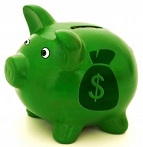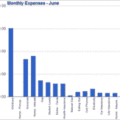Having some money saved can make all the difference when you need funds in an emergency, but you probably know that saving money is not easy. It requires self-discipline because it is very tempting to spend any spare dollars you may have each month rather than saving them. To meet your goals and reduce any financial stress, you need a method of saving money that works for your particular circumstances. Take a look at these tips to help you develop a plan of action to increase the funds in your savings account gradually.
Reasons to Stop Stressing
While we all worry about money sometimes, there are ways to reduce chronic money worries. Keep in mind that as your savings account balance increases, you are getting closer to your goals of financial security or saving enough to make a big purchase.
Financial Security
Saving up for a rainy day can be reason enough to go all in when it comes to why you should push yourself to save. You never know when disasters like home storm damage, serious illness, and more might strike, so it is beneficial to have some money saved.
Big Expenses and Purchases
When the reward is big, you are more likely to stay focused on saving. Whether you are saving to make a down payment on a home or for college, the reward will be worth the effort! Even better, some people can save enough to pay in full for large purchases such as a car, which saves paying hefty interest charges on a loan.
Choosing a Savings Account
When you are putting your hard-earned money into a savings account, you want it to be the right type of account. There are a wide range of savings accounts available so you will need to select one that will best suit your purposes.
As the name implies, a free savings account saves you the expense of paying fees for the service. They are an excellent beginner’s savings account, especially when there is no minimum balance, so you don’t have to worry about constantly checking your account balances or being charged fees when you are short on funds.
Some of the best savings accounts ensure that you are earning interest on your money – however much you have on deposit. But, some high-yield accounts might require you to maintain a minimum monthly balance. If you can get a free savings account that earns interest with no minimum balance requirement, then you will be in the best position to save some money while on a tight budget.
Other Savings Options
While a savings account is a low-risk option for keeping your money safe, there are others:
- Money market accounts – usually require a minimum deposit and balance with limited monthly transactions.
- Certificate of Deposits, or CDs – offer a high interest rate, are FDIC insured, and typically require you to leave the money on deposit for months or even years.
- Bonds – allow you to collect interest over time based on a fixed interest rate. When the bond reaches maturity, you receive the face value of your original investment.
Saving Methods
There are many ways to save, and some people are successful at combining a number of techniques. Check out these actionable ways to plan a budget for savings.
A tip that most finance professionals will tell you is that it is essential to stay organized when planning your budget. Both the pros and frugal household budgeters benefit from maintaining a monthly spreadsheet document with pertinent budget information.
Simple Budget
Budgeting begins with assessing your income and expenditures. Make a list of your expenses broken down by essential items, like electricity, and non-essentials, like entertainment expenses. An excellent starting point is looking back at a prior month’s earnings and spending.
Staying on budget can be as simple as dividing up each month’s pay into groups by percentage. Some households put 60 percent toward essentials, 20 percent to non-essentials, and 20 percent directly into a savings account. Other households manage an 80/20 split between expenses and savings, which can be more flexible.
Savings should be noted in your budget. If you are currently saving less than you need, go through the non-essential items to see what you can cut out or reduce. Check out my post on how to create a money saving pareto chart to focus your savings.
Cut Costs
Cutting down on your spending requires willpower and a change of habits. By eliminating fast food and expensive drinks from your diet, both your wallet and your health will benefit.
Take time to review your essential budget items for additional savings. Plan a time to call service providers to ask for the current special rates or to downgrade services.
If you are struggling to pay for basic utilities, ask your electric company or search online to see if you are eligible for a program that helps those unable to pay. Many of the programs are funded by donations from people in your community like California’s Neighbor to Neighbor program.
Final Thoughts
With careful planning and the right savings account, you will be able to save more. Remember to list your income and expenses to identify where you could cut costs, and create a monthly budget plan that works for you.









